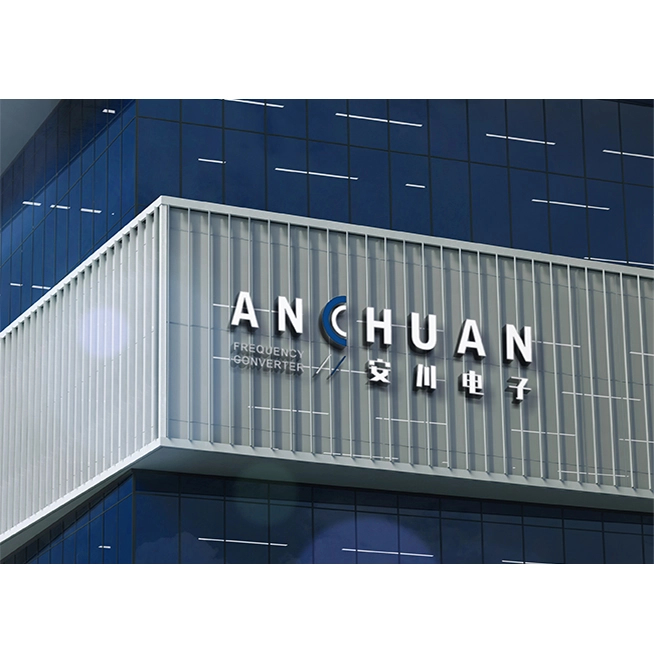As a professional frequency inverter manufacturer, our company takes quality as its premise and produces general frequency converter inverters, solar inverters, and other main products, as well as inverter parts, reactors, filters, and a series of related products. Our inverters not only support single-phase or three-phase input but also have a wide range of wattage. It minimum kilowatt rating is 0.75 kw, and its maximum kilowatt rating is 800 kw. It has two types: 220v and 380v, and it is extensively employed in industry, agriculture, and daily life.
We have been a frequency inverter supplier for 10 years, and thanks to our high quality, our three-phase inverter products have a great competitive advantage in the frequency converter industry. The technical procedures for our drives are written by a team of top senior engineers with over 40 protection procedures. Our products use imported chips, good-brand modules, large radiators, and a variety of high-quality materials to ensure the stable operation of the inverter and high-efficiency output. We have rich experience in the production of variable frequency inverter and can provide customers with a range of customized services.

A frequency inverter, also known as a variable frequency drive (VFD) or adjustable speed drive (ASD), is an electronic device that controls the speed of an electric motor by varying the frequency of the electrical power supplied to it. It converts the fixed frequency AC power from the mains to a variable frequency output, allowing precise control over the motor's speed and torque.
Frequency inverters are commonly used in industrial and commercial applications to control the speed of motors in various equipment such as pumps, fans, compressors, conveyors, and machine tools. By adjusting the frequency and voltage supplied to the motor, the speed and torque can be regulated according to the requirements of the application, resulting in energy savings, improved process control, and increased equipment lifespan.
Frequency converter inverters typically include the following features:
1. Variable frequency output: The main feature of a frequency converter inverter is its ability to provide a variable frequency output, allowing precise control over the speed of the connected motor. This enables speed adjustment to match the requirements of the application, resulting in energy savings and improved process control.
2. Control modes: Frequency inverters offer various control modes to regulate motor speed. These can include speed control, torque control, and position control. The specific control mode can be selected based on the application and desired performance.
3. Automatic voltage regulation: Frequency inverters typically provide automatic voltage regulation, which ensures that the voltage supplied to the motor remains constant despite changes in the input voltage from the mains. This feature helps protect the motor and other connected equipment from voltage fluctuations.
4. Acceleration and deceleration ramps: Frequency inverters offer adjustable acceleration and deceleration ramps, allowing for smooth motor startup and shutdown. These ramps gradually increase or decrease the motor speed, minimizing mechanical stress and reducing the chances of equipment damage.
A frequency inverter, also known as a variable frequency drive (VFD) or adjustable speed drive (ASD), works by converting the fixed frequency alternating current (AC) power from the mains to a variable frequency and voltage output. Here's a step-by-step explanation of how a frequency inverter works:
1. Rectification: The incoming AC power is first converted into direct current (DC) through a rectifier circuit.
2. Filtering: The DC power is then passed through filtering components, such as capacitors, to remove any unwanted ripple or fluctuations.
3. Inversion: The filtered DC power is then fed into an inverter section, which consists of insulated-gate bipolar transistors (IGBTs) or other power electronic devices. These devices switch the DC power at high frequencies (typically several kilohertz) to create a pulse-width modulation (PWM) waveform.
4. Voltage modulation: The PWM waveform is then modulated to achieve the desired output voltage level. The inverter section adjusts the duration of each pulse to control the effective voltage supplied to the motor.
5. Frequency modulation: In addition to voltage modulation, the inverter also modulates the frequency of the output waveform. By adjusting the timing and duration of the pulses in the PWM waveform, the frequency of the AC output can be varied.
6. Motor control: The variable frequency and voltage output from the inverter is then supplied to the motor. The motor converts the electrical power received into mechanical power to drive the load. The frequency inverter continuously adjusts the frequency and voltage to control the motor speed and torque according to the desired requirements.
7. Control signals: The frequency inverter receives control signals from various sources, such as an operator interface or a control system, to set the desired speed, torque, or other parameters. These signals modulate the output frequency and voltage accordingly.
8. Monitoring and protection: The frequency inverter continuously monitors various parameters, including current, voltage, temperature, and motor load. It employs protection mechanisms to prevent damage to the motor and inverter, such as overvoltage, undervoltage, overcurrent, and short-circuit protection.
By regulating the frequency and voltage supplied to the motor, a frequency inverter enables precise control over the motor's speed and torque, facilitating energy efficiency, improved process control, and motor protection.
When selecting a frequency inverter, there are several factors to consider. Here are some important steps to guide you through the selection process:
1. Determine the motor specifications: Identify the motor's voltage, power rating, current, and speed requirements. Make sure the frequency inverter you choose can accommodate these specifications.
2. Assess the application requirements: Consider the specific needs of your application, including the desired speed range, torque control, and any special features or functionality required. This will help narrow down the choices based on the inverter's capabilities.
3. Consider the load characteristics: Analyze the load characteristics of the motor-driven system. This includes factors such as whether the load is constant or variable, the starting torque required, and any potential fluctuations in load during operation. This information will help determine the appropriate power rating and control features required in the frequency inverter.
4. Evaluate the control options: Review the control modes offered by the frequency inverter and ensure they align with your application requirements. Consider whether you need precise speed control, torque control, or position control.
5. Check for protection features: Assess the available protection features, such as overvoltage, undervoltage, overcurrent, and short circuit protection. Ensure these features align with the operating conditions and potential risks in your application.
6. Consider the communication and connectivity options: Determine if you require integration with a control system or remote monitoring capabilities. Check for communication interfaces like Modbus, Profibus, or Ethernet to ensure compatibility with your setup.
7. Evaluate the manufacturer and support: Research the reputation and reliability of the manufacturer or brand you are considering. Look for customer reviews, warranties, and technical support options to ensure you have access to assistance when needed.
8. Compare prices and budget considerations: Consider the cost of the frequency inverter and ensure it fits within your budget. However, prioritize quality, reliability, and the level of features and protection offered over solely focusing on price.
By carefully considering these factors and evaluating multiple options, you can select a frequency inverter that meets the specific requirements of your application and provides reliable and efficient motor control.

Frequency inverters, also known as variable frequency drive (VFD), have revolutionized motor control methods and offer several advantages over traditional control methods.
One key difference is that traditional methods, such as on/off control or direct-on-line (DOL) starters, provide only fixed-speed operation. In contrast, frequency inverters provide variable-speed control, allowing for precise motor speed regulation. This flexibility offers several benefits, including improved motor efficiency, reduced energy consumption, and enhanced process control.
Frequency inverters achieve variable-speed control by adjusting the frequency of the electrical input to the motor, which in turn adjusts the motor's rotational speed. This allows the motor to operate only at the speed required for the particular load or application, eliminating the energy wastage associated with running at full speed constantly.
Furthermore, frequency inverters offer smooth and gradual motor acceleration and deceleration, reducing mechanical stress on the motor and associated equipment. This can extend the lifespan of the motor and reduce maintenance costs.
Traditional motor control methods also lack advanced protection features found in frequency inverters. Frequency inverters often include built-in overload protection, short-circuit protection and phase loss detection. These safety features contribute to increased system reliability and offer greater protection against motor damage or failure.
Additionally, China frequency inverters provide advanced control features such as torque control, position control, and sensorless vector control. These capabilities enable precise control over motor operations, allowing for optimized performance and enhanced process efficiency.
Frequency inverters offer significant advantages over traditional motor control methods. They provide variable-speed control, increased energy efficiency, improved motor protection, and advanced control features. As a result, frequency inverters have become the preferred choice for motor control in a wide range of industrial applications.
Efficient Frequency Inverter Solutions